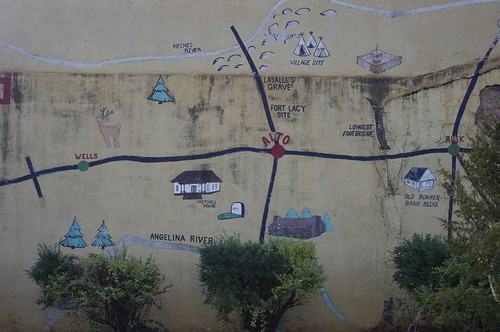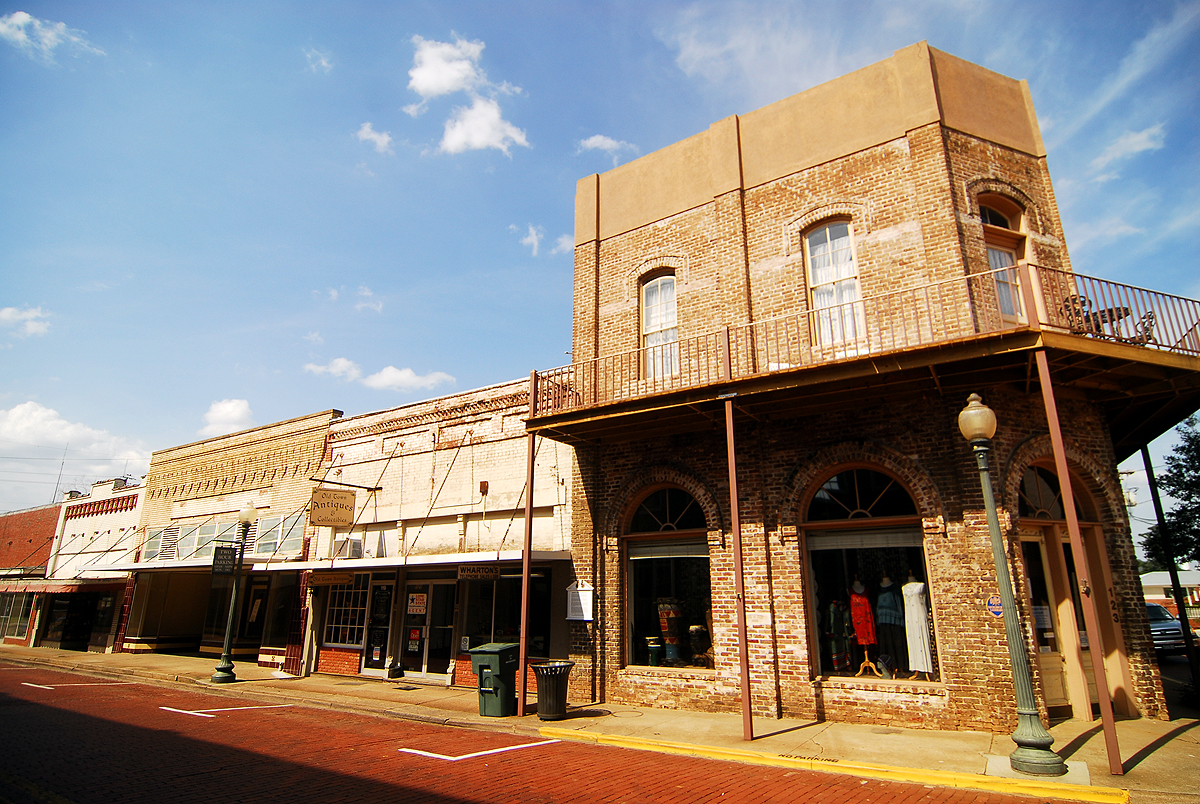Blue Highways: Alto, Texas
Unfolding the Map
Click on Thumbnail for MapWe're still riding with William Least Heat-Moon (LHM) through small towns in East Texas. Not much verbiage from me about the town or the dusty Texas plains today, but a good video is provided in the post below. To see where we are in our journey, click on the thumbnail of the map at right.
Book Quote
"Alto, on Texas 21 and about an hour west of the great line, was a pure Western town: streets broad and at right angles, canopies over sidewalks, false-front stores, the commercial section a single long street rather than a cluster around a confluence of streets. And the businesses tended in one manner or another toward ranching and lumbering."
Blue Highways: Part 4, Chapter 1
 Mural in Alto, Texas. Photo by wildstar84, on Flickr. Click on photo to go to host site.
Mural in Alto, Texas. Photo by wildstar84, on Flickr. Click on photo to go to host site.
Alto, Texas
I don't have much to say about Alto, Texas today. This is probably due to a few reasons. One is that I don't know much about Alto. I know, Littourati, that lack of knowledge usually doesn't stop me, but in this case, I'm not feeling very creative. Besides, my hometown was very similar - a small place devoted to lumbering with a wide main street bordered by false front buildings along a single long commercial district.
If there's one thing to say, it's that once you get past the Mississippi, or past that invisible line that demarcates East from West in the United States, pretty much most semblance of European city construction disappears. Towns stretch out. People are individual in their outlooks and characters and do not necessarily congregate together in a town square. There are exceptions to this. Cities in Texas that were founded by the Spanish or Mexicans tend to still have this type of European layout, with a central square in the middle of the town or city usually fronted by a church or cathedral. But anything founded by Anglo settlers looks and feels different. In those towns, the emphasis is on individuality. One goes to town to get what one needs, not necessarily to spend a lot of time hanging around, so commercial districts are emphasized and are elongated along at least a mile of street.
So, rather than bore you with things I don't know about Alto (you can look at the links below if you want to know more about this particular place), I will post a YouTube video featuring a song, "Stupid Texas Song," that captures Texas pride while poking fun at it. The Austin Lounge Lizards are a Texas band that's versatile in folk, country and bluegrass. They also have a lot of fun by writing and performing songs that make fun of virtually everything. In this case, they take on the way that Texans perceive themselves. Think of it as a kind of good natured, gentle riposte to Lyle Lovett's "That's Right, You're Not From Texas (But Texas Wants You Anyway)" that I included in a previous post. One thing that Texas has, in abundance, is amazing musicians who create amazing music. I hope to introduce you to some of them as we make our way across Texas with LHM. Enjoy the Lizards - the video includes pictures that match the lyrics!
If you want to know more about Alto
Texas State Historical Association: Alto
Texas Escapes: Alto
Wikipedia: Alto
Next up: Caddo Mounds State Historical Park, Texas




 Thursday, January 20, 2011 at 5:16PM
Thursday, January 20, 2011 at 5:16PM
